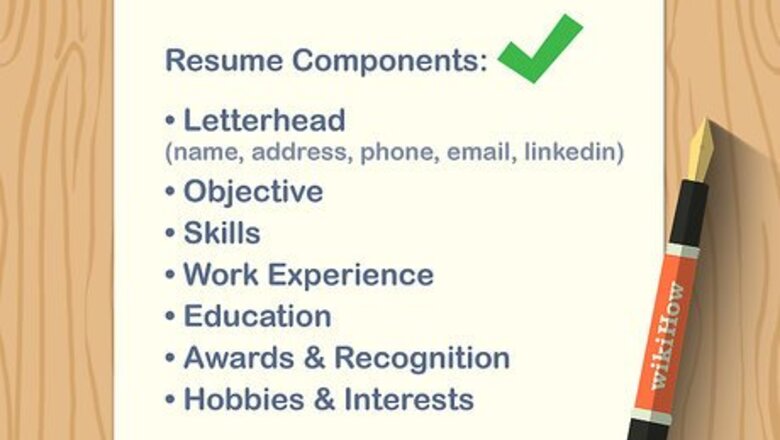
views
X
Research source
Structuring Your Resume
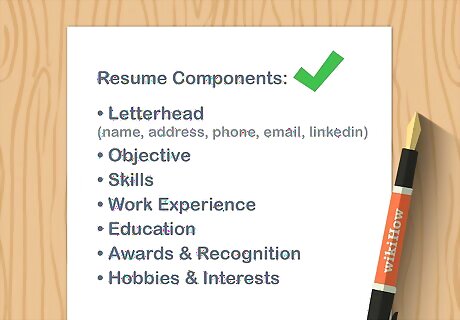
Choose a template or design your own. Most word processing apps have several different resume templates you can choose from. If none of them appeal to you, however, you can always use your own design. There are also templates available for download online, many of them free. If you don't want to use one of the basic templates in your word processing app, you may find another online that works for you. Template elements can also be customized to suit your needs. Think of it as scaffolding that you can adjust or eliminate as necessary. Use a standard, readable font in 10- or 12-point. Your section headings may be a little larger. Times New Roman and Georgia are popular serif fonts. If you want to go with a sans-serif font, try Calibri or Helvetica.Tip: If you're looking for a job in web layout and design or graphic design, build your own unique design and use your resume to show off your skills.
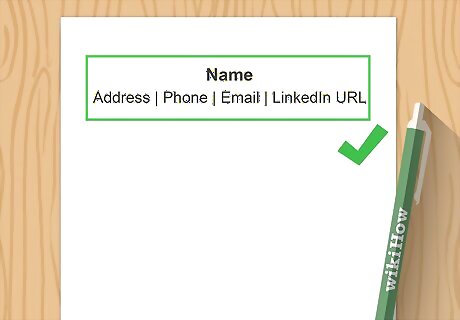
Create a header with your name and contact information. At the top of your page, type your full name, address, phone number, and email address. Play around with the formatting to find something that you like best. For example, you could have all the information centered. You could also have your address on the left side and your phone number and email address on the right, with your name centered in the middle in a slightly larger size. If you don't already have a professional email address, get one from a free email service such as Gmail. Ideally, the email address you use on your resume will be some version of your initials and last name. Never list a silly or suggestive personal email address on your resume.
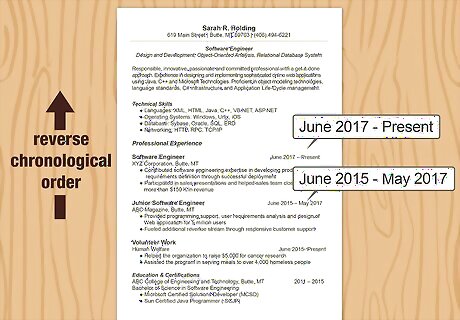
Use a chronological resume in more conservative fields. In a chronological resume, you list your work experience and education in reverse-chronological order. This is a classic resume format that would likely be more appreciated by older hiring managers, or those in conservative fields such as accounting or law. You don't have a lot of flexibility with a chronological resume, but you can still arrange the sections in a way that puts your strongest information at the top. For example, if you have a lot of education but not a lot of work experience, you might want to list education first.
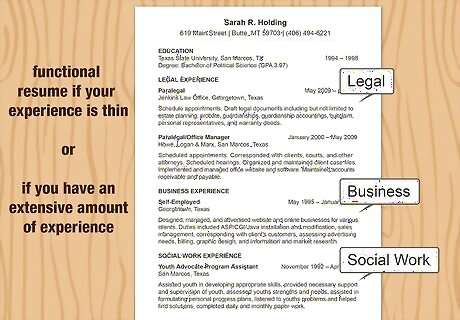
Try a functional resume if you lack direct work experience. With a functional resume, you can highlight your specific skills and assets without having to list every job you've ever had. This can be a benefit if your work experience is thin. A functional resume is also a good choice if you have an extensive amount of experience and want to limit your resume to a page. You can focus on the skills you've developed rather than having to list each individual job with specific details.

Combine a chronological and functional resume to highlight your skills. You can still use a functional resume even if you're looking for a job in a more conservative field. Lead off with a skills section, then include chronological sections underneath. Because this type of resume can get lengthy, consider only listing your last 2 or 3 jobs and your highest educational degree. If you've been at your most recent job for over 10 years, you may want to only list that. You can make clear in the functional part of your resume how long you've been working in the industry.
Making Your Content Shine
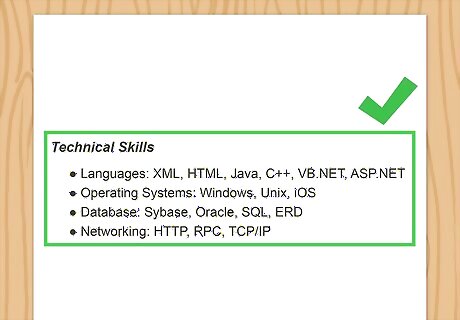
Lead with groups of skills for a functional resume. A functional resume puts emphasis on what you can do, rather than on what you've done. Brainstorm a list of 4 to 5 categories of skills that you have experience or education in. Then include a brief description of the skill and bullet points with specific examples of when you put that skill to use. For example, if you're creating a resume for an online writing job, you might include "editing" as one of your skills. One of your bullet points might state the number of articles you've edited on wikiHow and any accolades you were given for that work. Even if it's volunteer work, it's still experience as an editor. You can also include relatively soft skills. For example, you might list "team leader" as one of your skills. You could then include bullet points detailing your work in student government, organizing a rally for a nonprofit organization, or working as a camp counselor.
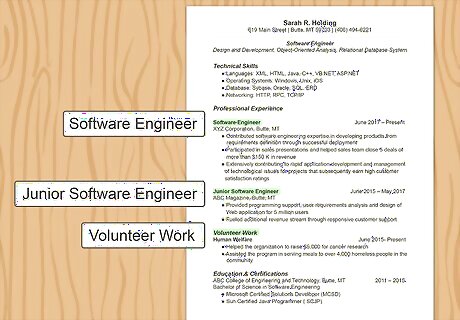
List work experience, including relevant volunteer work. For a chronological resume, add specific jobs and other work experience in reverse-chronological order, starting with the most recent job you've had. Use specific, descriptive job titles that tell potential employers exactly what you did through that experience. Generally, you should include the month and year you started and ended the job in a chronological resume. However, if you worked there for several years, just the years are typically fine. With a functional resume, you have a little more leeway in how you include your work experience. You don't necessarily have to include the dates you worked for a particular employer, although you should indicate the length of time you worked there. For example, you might say "Managed 20-person sales force for 10 years." Use active verbs to describe your responsibilities and accomplishments. Specific numbers and metrics show potential employers exactly what you achieved. For example, if you were a sales manager, you might include a line such as "Implemented changes that increased sales by 27% in 1 quarter." EXPERT TIP Charbel Atala Charbel Atala Talent Acquisition Strategist & Managing Partner Charbel Atala is a Talent Acquisition Strategist & Managing Partner at Talent Gurus, a game-changing retained search firm located in the heart of San Francisco, California. With a unique blend of over five years in talent acquisition and a solid 15-year background in corporate law, Charbel crafts performance-driven talent solutions that are tailored to each client's unique culture and needs. Charbel Atala Charbel Atala Talent Acquisition Strategist & Managing Partner Leverage your achievements strategically on your resume. Be selective in choosing which professional and academic accomplishments to highlight on application materials. Only showcase achievements that prove you possess strengths and capabilities needed for the target role.
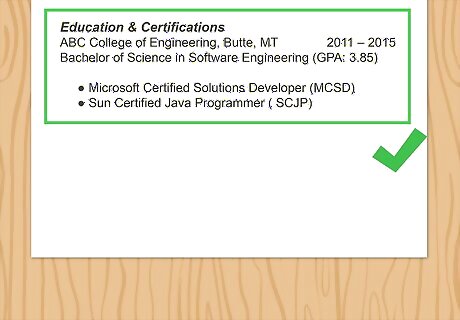
Include relevant education or certifications. Typically, your highest degree is the only one you need to include on your resume. However, you should include lower degrees if they're relevant to the job you're applying for. Additionally, list any relevant licenses or certifications you have. For example, if you've just graduated from law school and are applying for a job as an attorney, you would want to include your law degree on your resume as well as the bar you've been admitted to. If you're admitted to practice in any other courts, you would want to list them as well. If you're creating a functional resume, your education section will probably be at the bottom of the page. Some people leave education off of a functional resume entirely. However, include it if the job post lists a specific degree as a requirement. If you had a cumulative GPA of 3.5 or higher, feel free to include it with your educational information. Otherwise, you should leave it out. If you're listing more than one degree, include your GPA on both of them if possible. Otherwise, don't include it at all.Tip: If you have a terminal degree that is essential to your line of work, you might include it in your header instead of creating a separate education section. This can free up some precious space.
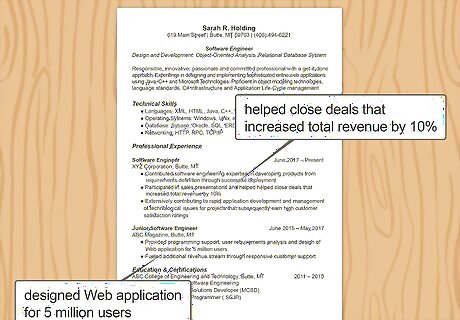
Emphasize hard skills that make you a more valuable employee. Even on a chronological resume, you might have a skills section if you want to let the hiring manager know about skills you possess that are relevant to the job. Focus on hard skills that can be objectively evaluated, such as computer or technical skills or languages. It can be tempting to fudge a little in your skills section and exaggerate your skill level to sound more impressive. However, this can get you in trouble. For example, if you only know a handful of words and phrases in Spanish, don't put on your resume that you're conversational or even fluent. If the hiring manager starts talking to you in Spanish, you've eliminated your chances of getting hired. If specific skills were listed in the job post and you happen to have those skills, on the other hand, include a skills section and list them along with detail about your proficiency.Tip: If you don't have a lot of work experience, you may want to include soft skills, such as "diligent" or "self-motivated" as well. Just make sure you back them up with concrete examples that demonstrate that trait.
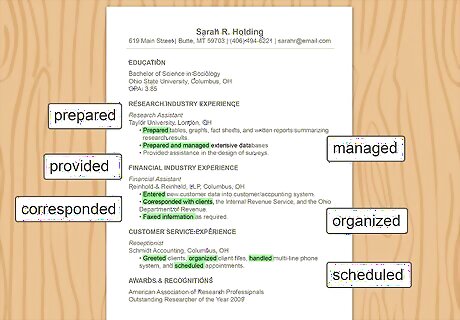
Place keywords in your resume strategically. Employers often use filtering software to scan resumes for specific keywords. These words indicate what they want in a potential employee. The software enables hiring managers to spend less time reading through resumes. To get through the filter, include keywords mentioned in the job listing. Make sure the keywords you use fit in with the rest of your text, and use them sparingly. There's no need to repeat the same word or phrase over and over.
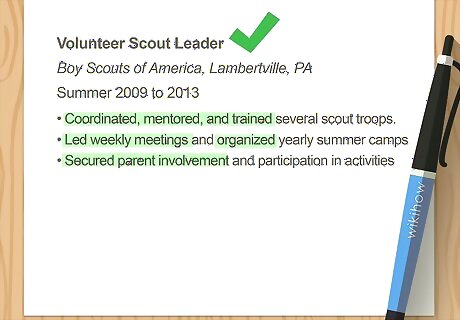
Add hobbies and interests if they relate to the job. A section for [[1]] and interests is usually considered optional, but if you're short on content it might help. However, you should include only hobbies or interests that would benefit you in the job you're applying for. For example, if you're applying to be a manager at a sporting goods store, the fact that you play several sports would definitely be relevant to that position.
Finalizing Your Resume
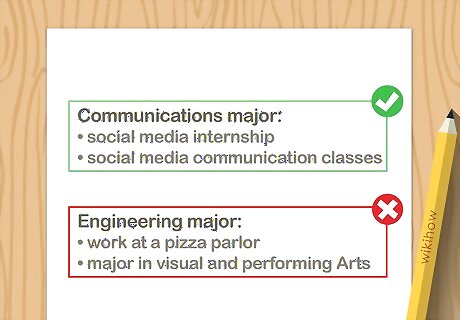
Tailor each resume to the specific job you're applying for. You may have a master resume that includes all of your skills, education, and experience. However, the resume you give to each potential employer won't necessarily include everything. Only include skills and experience that are directly related to that job. Try to make your resume match the job listing as closely as possible. Move sections around if needed so that the most important qualifications listed in the job description are at the top of the page. Rearrange your bullet points as well, putting the most relevant information first. Even if you're proud of a particular accomplishment, take it off your resume if it doesn't relate to the job in any way.Tip: If you're applying for a job that's a departure from your previous career path, it can be helpful to add a summary that explains your interest or why you're applying for that position.

Edit your resume to eliminate excess words and create space. Active, punchy text is essential in a resume, since the document will likely only be glanced at for a few seconds. Remove pronouns, articles, adjectives, and adverbs. The final statement should communicate only the action and the result of that action. For example, suppose you worked as a barista at a café. You might include a bullet point that you maintained high sanitation standards. However, you want to make that as quantifiable as possible. You might say "Implemented new sanitation program; increased café health and sanitation score by 11%." Make your bullet points personal, rather than just rattling off the job description for the position. For example, if you were a retail sales associate, you might say "Exceeded all personal sales goals for 4 months" rather than "Sold clothing and accessories to customers."
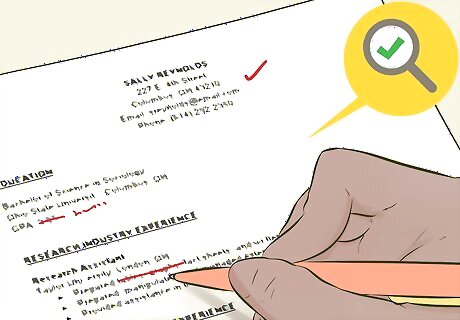
Proofread carefully before submitting your resume. Don't rely solely on the grammar and spelling checkers built into your word processing app. Read through your resume several times to make sure it's error free. Reading out loud can also help you find errors or awkward wording. Be careful with apostrophes and contractions. If you have difficulty with contractions and possessives, read what you've written as though you spelled the full words out rather than using an apostrophe and see if it makes sense. For example, you could easily find the error in the sentence "Trained sales staff and reported they're progress" if you read it as "Trained sales staff and reported they are progress." Make sure your formatting and punctuation are consistent. For example, if you use bullet points in one section, you should use them in all sections. Free online apps, such as Grammarly, can help you find errors you might not have noticed on your own.Tip: Start at the last word and read each word in isolation, moving backward through the document. This removes the narrative structure to help errors stand out more.
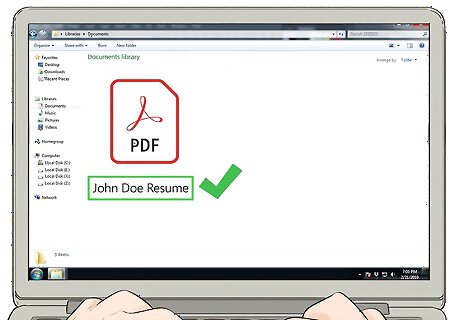
Save your resume as a PDF file. If you're sending your resume to potential employers online, they most commonly want a PDF. Use that file format unless the job listing specifically requests something else. A PDF document benefits you as well because it preserves your formatting choices. It also prevents errors from being accidentally introduced if the hiring manager opens your resume or prints it out.
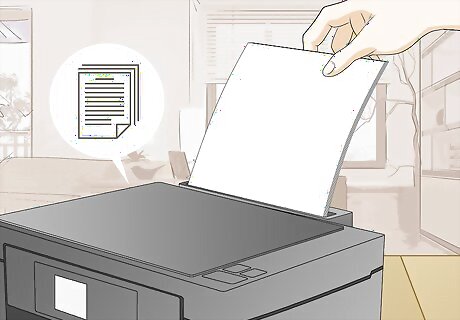
Print copies of your resume to take to the interview. Print your resume on a good printer using quality white or ivory paper. You can find "resume paper" online or at office supply stores. If you included hyperlinks for your digital resume, take them out before printing so all your text will be black. Take at least 3 copies of your resume to the interview. If you know you are being interviewed by a hiring team, take enough copies so that each member of the team can have one. You also want to make sure you have at least one left over for yourself.














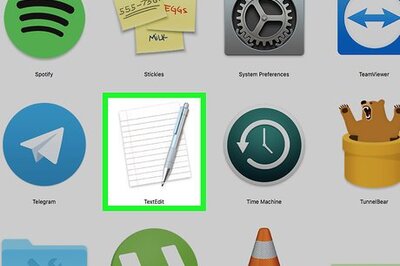




Comments
0 comment